Хаас за Русия
Ромен Грожан:
Haas F1 Team will run its latest aero spec at Sochi, which is a blend of old and new. Can you explain how the run of car-to-car comparisons over the summer allowed you to get a better understanding of what has been affecting the performance of the Haas VF-19 so that, ideally, you have an improved showing in Sochi?
We’ve brought updates during the year on the car, and those updates haven’t really been working as expected. So, we’re really trying to understand where the correlation from the wind tunnel to the track is. That’s why we’re going to try a different setup, a different aero package on the car, and see if we can actually get a clear understanding and prepare as good as we can for 2020.
While these car-to-car comparisons Haas F1 Team has run in past grands prix are unconventional, it has provided data in real-world conditions. Has this at least helped paint a more accurate picture of why the cars are performing the way they are as opposed to an open test where you can only simulate race conditions?
Yes, it’s been really good to compare cars in those conditions. The feeling was very much in line with what we’ve seen. So, that has been really good to be able to do.
With Haas F1 Team being one of the smaller teams in Formula One, does this also allow the team to be more nimble and more open to trying things in an effort to improve itself? More specifically, could a big team have tried as many things as Haas F1 Team did in the same period of time or would bureaucracy have gotten in the way?
No, I think generally in Formula One, the bigger you are the more power you’ve got, the more resources you’ve got. It’s great that we can try a few things and, obviously, maybe the decision goes faster, but we’re still a fairly young, small team in comparison to others. Obviously, when we have an issue, because we have less people, it just takes a bit longer to understand and analyze. We’ve seen with Mercedes earlier in the year how quickly they could react to a car that wasn’t well born at the first winter test, then they were super competitive in Melbourne.
Haas F1 Team recently announced that it would retain its driver lineup for 2020. You’ve been with the organization since its debut in 2016 and have had a large hand in its success. When the team as a whole faces the kind of adversity it has this year, is it satisfying to be able to continue to work to find a solution and, ideally, see those efforts pay off next year when you’re back in a racecar that was designed with your feedback?
I started my story with Haas back in 2016. I’ve been there since day one. Obviously, this year’s been a rough year – probably our toughest one since the beginning. It’s good that we stick together. We work hard and we try and find the solutions for 2020. I’m really hoping that next year we get a good car, have a great season and leave 2019 behind us.
Your feedback will again prove valuable this weekend at Sochi as this hybrid aero spec is utilized throughout the race weekend. What do you need to feel in the racecar to best take advantage of the track’s characteristics?
We need to understand why the new package wasn’t giving us the rear downforce that we want and expect. Sochi is a difficult circuit to generate tire temperature. If we get the rear downforce, then we should be able to generate the temperatures. Also, the consistency through the corner on a low-grip circuit is very important. If we get to that point, where we get the consistency from the chassis and the aerodynamics and the downforce to generate the grip with the tires, that’s what you want to get in Sochi. That’s what we’re going to try to do.
Кевин Магнусен: While these car-to-car comparisons Haas F1 Team has run in past grands prix are unconventional, it has provided data in real-world conditions. Has this at least helped paint a more accurate picture of why the cars are performing the way they are as opposed to an open test where you can only simulate race conditions?
It opened our eyes to the fact that the new packages haven’t delivered and that the old package was probably the best one. That’s good and important to learn for the future. We’ll correct it, I’m sure.
With Haas F1 Team being one of the smaller teams in Formula One, does this also allow the team to be more nimble and more open to trying things in an effort to improve itself? More specifically, could a big team have tried as many things as Haas F1 Team did in the same period of time or would bureaucracy have gotten in the way?
I do think so. We’ve had a setback this year. The team has over-delivered in three years considering how small the organization is and how limited we are on resources in comparison to these other teams. We’ve delivered more than could be expected for three years. Now we’ve had a year where we haven’t delivered as well, but I see that just as a one-off. I see how the team is working in the background and I’m very confident for the future. I’m confident the team will get back to over-delivering.
Haas F1 Team recently announced that it would retain its driver lineup for 2020. You’ve been with the organization since its sophomore year in 2017 and have had a large hand in its success. When the team as a whole faces the kind of adversity it has this year, is it satisfying to be able to continue to work to find a solution and, ideally, see those efforts pay off next year when you’re back in a racecar that was designed with your feedback?
It’s a really valuable learning experience. There’s no secret that we’d all prefer to be running at the front and fighting for points every weekend getting great results. We’re not currently there or in that position. It’s interesting to be part of the process in getting out of our current situation. I’m really looking forward, and I believe we will get back to the strong form the team’s shown from the last three years. As I said before, we’ve over-delivered massively, and I think a lot of people forget how small an organization this is and how different this team is compared to the other teams on the grid. The fact that we can look back over three years, where we’ve been fighting teams like McLaren and Renault, and beating teams like Alfa Romeo, Racing Point, Williams – I think that’s incredible. It’s just a matter of time before we get back in that position, I’m sure.
Your feedback will again prove valuable this weekend at Sochi as this hybrid aero spec is utilized throughout the race weekend. What do you need to feel in the racecar to best take advantage of the track’s characteristics?
You just want as much downforce as you can get. You want the most consistent aerodynamics you can get on the car. Once you start having issues with aero, then that transfers into everything else. You could say the whole car gets infected. You then start compensating on the mechanical side, as well. You compromise other areas of the car to try and help the aero. It can get like a downward spiral. Hopefully, we can extract a bit more out of the package in Sochi and find a more consistent base for the car to deliver.
Гюнтер Щайнер: While these car-to-car comparisons Haas F1 Team has run in past grands prix are unconventional, it has provided data in real-world conditions. Has this at least helped paint a more accurate picture of why the cars are performing the way they are as opposed to an open test where you can only simulate race conditions?
The more kilometers you do, the more you learn. Doing it in racing or testing, it doesn’t make a big difference, but maybe you can see if the tire doesn’t overheat as much. At the moment, we’re in a phase where we know what the car is doing, we’re just trying to find the better spec for each circuit – that’s why we’re doing it. We’re not experimenting with it anymore. We’re actually putting the packages on how we think it is best suited.
You recently announced that Haas F1 Team will retain its driver lineup of Grosjean and Magnussen for 2020. Their collective experience and, more specifically, Grosjean’s experience with the team since he’s been a part of the organization since its inception, was cited as a key factor in maintaining your driver lineup. How valuable has their experience been?
The aim is to keep stable things that work in the team. At the moment, we don’t have a driver problem, we have a problem with the car. We don’t want to lose sight of that. Instead, we’ll focus on other aspects that we need to focus on. We leave the other stuff alone.
As team principal, there is always something on your to-do list, but how helpful is it to have Haas F1 Team’s driver lineup finalized for next year so you’re able to focus on other elements of the team?
It’s helpful, as now my main focus is on next year’s car – to try to make it the best possible from the situation we’re in this year. I’m pretty sure we’ll get out of it because we have a good understanding. It’s also decision time on the 2021 regulations, which are not only down to me, but it takes some work being involved and making sure the regulations are what we would like them to be.
With all that you’ve learned this year about the Haas VF-19, how has it affected the direction of next year’s car?
Obviously, all this work is brought forward to next year, because next year’s car will be an evolution, as there’s no regulation change. This year it was a new regulation, so whatever we learn on this car we can implement on next year’s car. That was our aim from halfway through the season when we realized we were struggling with our car. We want to make sure not to make the same mistakes on next year’s car – that was our main aim from midway through this season.


















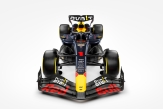
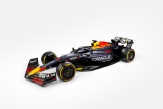

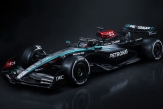
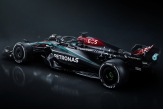


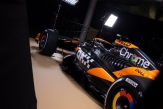

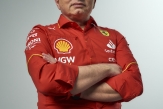
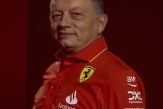
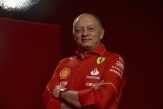



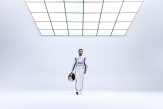


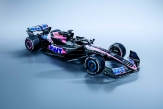
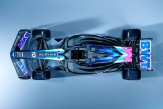




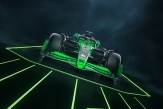
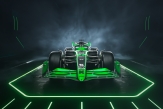
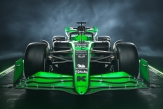

15/04/2024 от Огнян Тенчев (drJeckyll), няма коментари